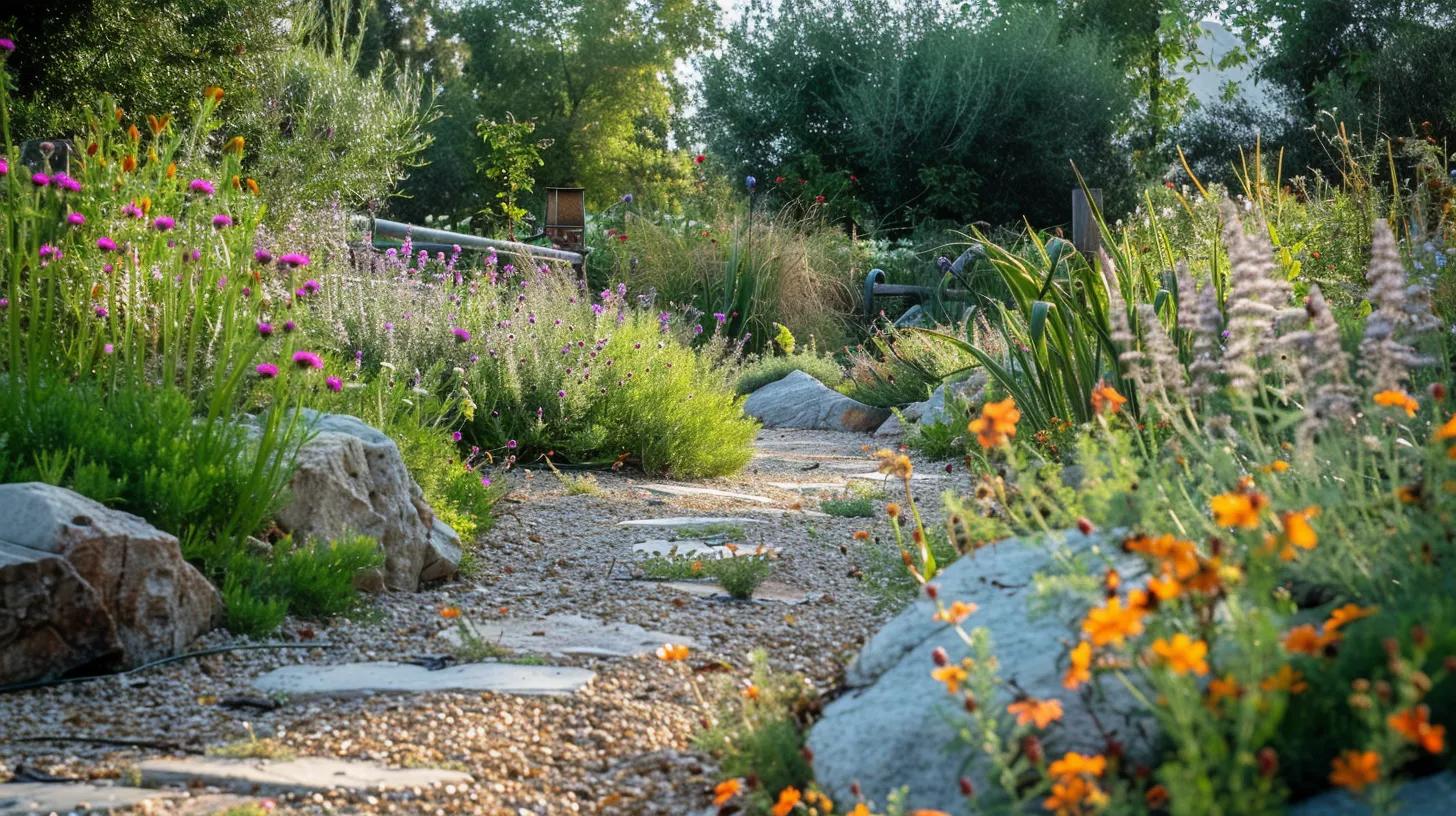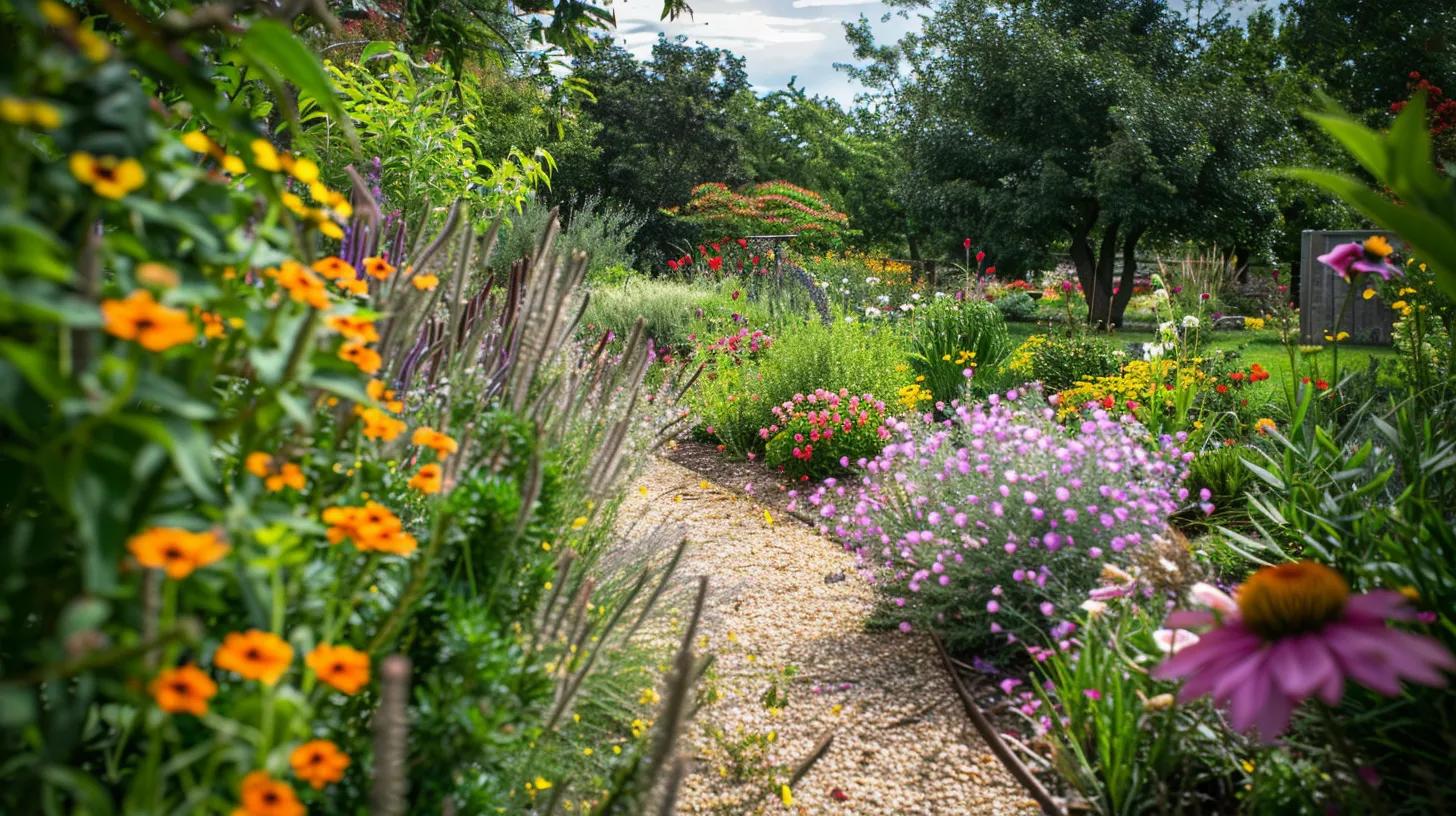Native plant landscaping solutions meet the need for sustainable, low-maintenance garden designs that promote ecological harmony and water conservation. In fact, many experts now recommend residential landscaping sydney techniques for creating outdoor spaces that are both eco-friendly and visually appealing. Brisbane homeowners can enhance their outdoor aesthetic while supporting local biodiversity.

Native plant landscaping uses species naturally found in a region, reducing extra irrigation, fertilizers, and pesticides. These plants maintain ecological balance by preserving genetic diversity and adapting to local climates. Their deep roots help stabilise soil and prevent erosion. Compared to traditional gardening, native plant designs simplify upkeep and support conservation, making them essential for environmentally conscious homeowners.
Native plants evolve in a region without human influence. They thrive in local climates and soils, requiring less water and fewer fertilisers. Their natural adaptation provides habitat for indigenous wildlife while offering aesthetic appeal paired with practical benefits like sustainability and resilience.
Native species conserve water, reduce greenhouse gas emissions, and enhance soil health thanks to their deep root systems and minimal need for chemical inputs. They curb runoff and water pollution while acting as natural barriers against climate change impacts. This sustainable approach benefits individual gardens and the broader ecosystem.
Native landscaping reduces maintenance and costs by eliminating the need for regular irrigation and chemical treatments required by non-native plants. Their adaptation to local environments ensures they are a resilient alternative that supports local biodiversity and long-term landscape health.

Choosing the right native plants involves knowing your local soil, climate, and sunlight conditions. Homeowners should consider water needs and compatibility with current garden features, seek regional guidelines, and consult experts. Key factors include drought tolerance, potential to attract pollinators, and suitability for shaded areas.
Different natives prefer varying conditions. Coastal species often do well in sandy soils and full sun, while woodland varieties favor richer, moist soils with partial shade. Testing soil pH and texture helps match plants with appropriate conditions; local services and native nurseries typically offer guidance on these matches.
Species like kangaroo paw, blue bottle brush, and certain grevillea varieties are excellent for dry conditions and low-maintenance gardens. Their deep roots extract moisture efficiently, reducing the need for frequent watering, a key benefit in water-conscious areas.
Plants with vibrant blooms and nectar-rich flowers, such as bottlebrush, waratah, and native wattle, attract bees, butterflies, and birds. Selecting species with staggered flowering periods ensures ongoing support for pollinators and helps maintain a balanced ecosystem throughout the year.
For low-light areas, species like ferns, select wildflowers, and understory shrubs can flourish. These shade-tolerant plants are perfect for spaces under trees or partially shaded spots, adding diversity and interest all year long.
Professional native plant landscaping services offer design, installation, and maintenance packages tailored to sustainability and aesthetics. Experts create customised planting plans that maximise environmental benefits while keeping gardens vibrant and low-maintenance.
Design services begin with assessing local climate, garden size, and client preferences. Designers combine sustainable principles with aesthetic planning to set plants in positions that optimise water conservation and biodiversity, creating landscapes that mirror natural ecosystems.
Installation involves site analysis, soil preparation, and precise planting techniques to ensure proper spacing and plant survival. Professional teams align plants with their environmental needs, maximising long-term garden health and reducing future maintenance challenges.
Regular maintenance includes pruning, using organic fertilisation such as compost, and employing integrated pest management. Adjustments in watering based on seasonal changes and prompt attention to any issues help maintain a robust, resilient garden.
Many companies offer bundled packages that provide a complete solution. These integrated services ensure continuity from design through installation and ongoing care, offering homeowners a hassle-free approach to sustaining their native plant gardens.
Native plants offer key environmental advantages: they conserve water, create habitats for wildlife, and improve soil health with fewer chemical inputs. Their local adaptation reduces the need for irrigation and diminishes water pollution, lowering the garden’s carbon footprint.
Because native species are suited to local rainfall and soil types, they require less supplemental irrigation. Their deep root systems absorb water efficiently, often reducing water usage significantly, a key benefit in arid regions.
Indigenous plants provide food and habitat for local insects, birds, and small mammals. Their seasonal blooms supply nectar and pollen, supporting a balanced ecosystem and promoting natural pest control.
Native species are inherently more resistant to local pests and diseases, which reduces the need for chemical interventions. This natural resistance leads to healthier soil and water quality and protects beneficial organisms.
The extensive root systems of native plants improve soil structure, prevent erosion, and enhance organic content. Healthier soil supports a rich microbial community and diverse insect life, contributing to overall garden biodiversity.
Integrating native plants into your design requires creative planning and practical landscaping. Consider seasonal color changes, diverse textures, and strategic placements that blend with current garden elements to create a cohesive and sustainable space.
Design ideas may include themed zones such as a native wildflower meadow or a water-wise succulent bed. Adding organic pathways and natural stone features emphasizes the connection to the local landscape, creating both functional and beautiful garden spaces.
Select native species with complementary flowering periods to ensure that the garden remains visually appealing throughout the year. Considering foliage texture and color shifts outside of bloom times can maintain interest even during off-peak seasons.
Successful integration depends on matching colors, textures, and forms with current features. Complementary hardscape elements like patios and retaining walls, along with container gardens, enhance both the functionality and aesthetics of a native landscape.
Group nectar-rich native species in sunny areas to attract bees, butterflies, and birds. Strategic placement near garden borders and water features can further increase pollinator activity and support a thriving ecosystem.
Local nurseries and landscaping companies offer expert guidance on selecting and caring for native plants, tailored to regional climates. Recommendations from community groups, horticultural societies, and online reviews help identify trusted suppliers, ensuring a higher success rate for your garden.
Trusted nurseries are often certified by regional environmental agencies and praised by the community. They provide a wide range of healthy native species and reliable advice on plant care, supported by positive testimonials and local garden shows.
Homeowners should seek companies experienced in native species and sustainable practices. Look for comprehensive service portfolios, transparent pricing, and evidence of successful projects, along with customer testimonials that vouch for the company’s reliability.
Local climate such as rainfall, temperature, soil type, and sun exposure, plays a major role in plant success. Experts can match native species to your garden’s conditions, ensuring resilience and vibrant growth.
Local experts bring invaluable knowledge of regional species, maintenance techniques, and design strategies. Their insights lead to higher plant survival rates and more sustainable, visually appealing landscapes, often offering access to exclusive native varieties.
Common issues include pest management, irrigation adjustments, and soil preparation. With proper planning, expert advice, and regular maintenance, these challenges can be managed effectively to ensure a thriving, low-maintenance garden.
Effective management uses integrated pest management practices that focus on monitoring, biological control, and minimal chemical use. Regular inspections and organic treatments maintain a natural balance in the garden.
Drip irrigation and watering during cooler times of day help reduce evaporation and provide deep, infrequent watering that aligns with native plants’ needs. This method conserves water while promoting steady growth.
Incorporate organic compost, minimally disturb the soil to avoid compaction, and adjust pH as needed. Occasional aeration and mulching further enhance nutrient retention and moisture, setting the stage for successful growth.
Plant native species during cooler seasons, such as autumn or spring, to allow roots to establish before extreme temperatures occur. Local experts can offer advice tailored to your region’s climate to ensure robust growth.

The table illustrates that native landscaping improves water conservation, soil health, and biodiversity while reducing reliance on chemicals.
Q: What are native plant landscaping solutions?
A: They use indigenous plants to reduce maintenance and promote sustainability.
Q: How do native plants reduce water usage?
A: Their adaptation to local climates requires less supplemental irrigation.
Q: Can native plants boost local biodiversity?
A: Yes, they provide habitat and food for local fauna and pollinators.
Q: When is the best season for planting native species?
A: Typically in autumn or spring, allowing roots to establish before extreme weather.
Q: How does professional landscaping improve garden sustainability?
A: It provides customised design, precise installation, and ongoing maintenance suited to local conditions.
Embracing native plant landscaping offers Brisbane homeowners an eco-friendly way to enhance garden beauty and sustainability. By selecting plants that suit local conditions, reducing chemical use, and supporting biodiversity, these gardens achieve a natural balance that benefits both homeowners and the environment. Professional design, installation, and maintenance further secure long-term success. Homeowners are encouraged to explore native options and work with local experts to create resilient, thriving landscapes.

